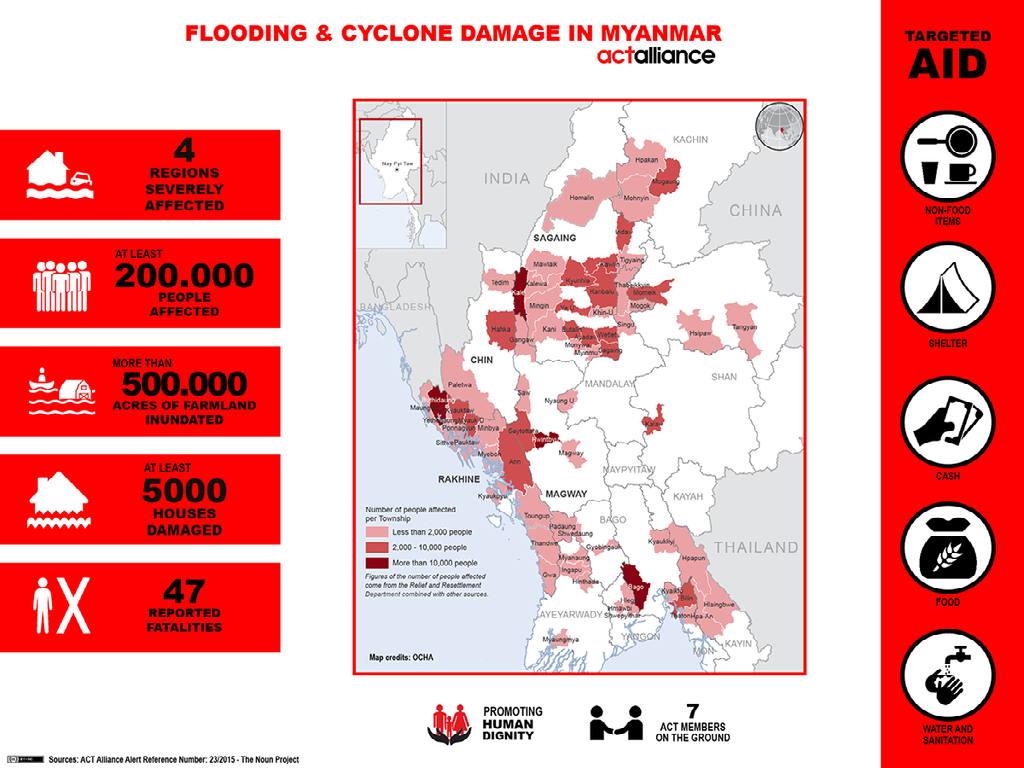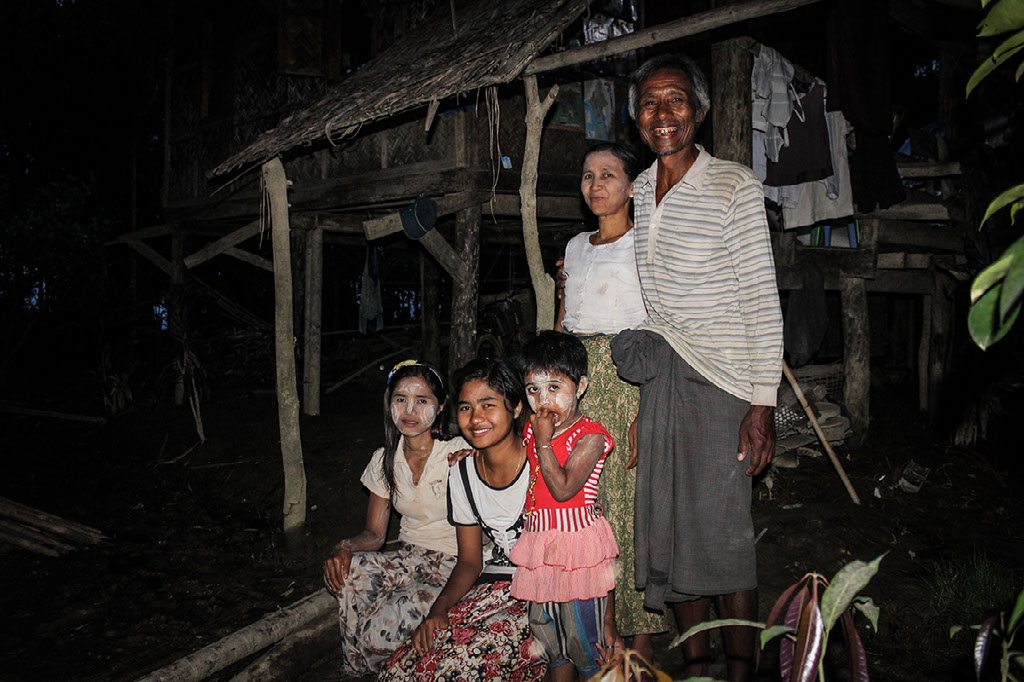The story of U Kyaw Thein Myanmar Floods: Crops Destroyed, Livestock Lost
U Kyaw Thein, 61, lives a simple life in the quiet Bauk Ywar village, located in Mrauk-U Township, Rakhine State. He has engaged in subsistence farming to support his family, planting rice in the wet season, and alternating it with maize during the dry season.

As the floodwater kept rising, U Kyaw Thein took a bundle of bamboo poles floating around his property and strung them together, creating a makeshift raft to transport his family to their village’s monastery where it was safe.
“We went to the monastery to sleep. There were six other families there,” said U Kyaw Thein. Some families fled the area, staying with their relatives in neighbouring villages, and others sought higher ground, finding shelter at a pagoda, located on the top of a nearby mountain"
Upon returning home, they discovered the extent of the damage caused by the flood. “Seven acres of my farmland was damaged. The water also ruined 50 sacks of our paddy seeds,” says U Kyaw Thein, “They were in storage, to be sowed during the next planting season. The water also carried away most of my farming tools, so what can I do now? My harvests will be delayed. I went into the water and tried to save my two cows, but they both drowned. I also lost 12 of my chickens,” continues U Kyaw Thein, his voice now becoming a little shaky. Whole paddy fields were submerged in over eight feet of water.
A girl carrying a vessel for collecting water walks past a village. Debris left behind by the floods flank both sides of the road. (Photo taken in Thi Kyar village, Mrauk-U Township, Rakhine state on 22 August 2015 by John Martin R. Celiz)
Villagers clean up debris left behind by the floods. Whole paddy fields were submerged in over eight feet of water. (Photo taken in the nearby village of Thi Kyar, Mrauk-U Township, Rakhine State on 22 August 2015 by John Martin R. Celiz)
According to an assessment conducted by ACT member LWF in his village, 1 school, 2 bridges, and 17 out of the 47 houses (36%) were damaged. 6,200 baskets of stored paddy seeds were lost, and 2 village ponds (which residents use for water collection) were contaminated with flood water.
ACT member LWF mobilised an emergency response team, which conducted rapid needs assessments, engaged in planning, and relief distribution operations in 18 villages within the five townships of Pongnakyun, Kyauktaw, Mrauk-U, Minbya and Ann. Food rations for each of the 43 households in U Kyaw Thein’s village included meant to sustain each family for 15 days. In addition to the food rations, LWF also provided exercise books to 9,078 students to start the early recovery phase. In a collaboration effort, LWF facilitated the distribution of the UN agency’s 1-month food ration to the villagers in those affected areas.
"We are very very happy. If your organisation did not give us support, we would have nothing to eat until now. We want to thank you very much,” says Daw Shwe Sein Phyu sincerely with her hands clasped together.
Daw Shwe Sein Phyu, 53, collects her family's WFP food ration from the LWF distribution point in their village. Rations consist of rice, pulses (beans), cooking oil, and salt, each enough to support a household for up to a month. (Photo taken in Bauk Ywar village, Mrauk-U Township, Rakhine State on 22 August, 2015 by John Martin R. Celiz)
Villagers actively volunteer in dividing and distributing food rations for their fellow community members, as LWF emergency response team members facilitate and document Bauk Ywar village’s distribution process. (Photo taken in Bauk Ywar village, Mrauk-U Township, Rakhine State on 22 August 2015 by John Martin R. Celiz)
Natural disasters will always be a part of life. They cannot be prevented, but we can, however, prepare for them to mitigate risks. The floods may have taken away people’s physical belongings, but it will take more than that to break their spirits.Those affected have started to show their resilience.“We have already started to plant again, and the rice is now slowly growing,” says U Kyaw Thein.

Like the paddy seedlings, slowly growing against gravity and resisting the elements to sprout from the soil and see the sun’s light, U Kyaw Thein and the villagers of Bauk Ywar will also continue to fight against the odds they face every day in their village hoping for a better tomorrow.The relief distribution phase has ended, but the long, difficult recovery phase is still to come, and those affected will need all the help they can get. There is still much work to be done.
